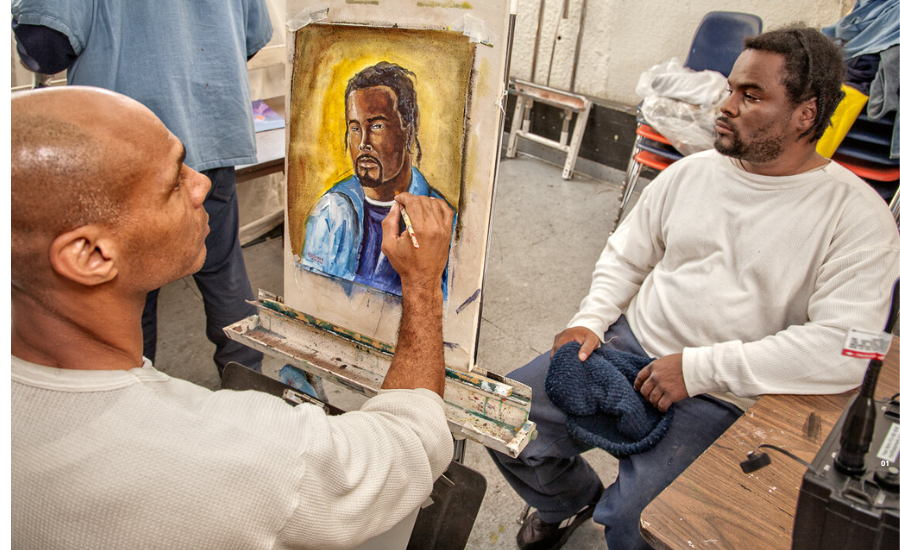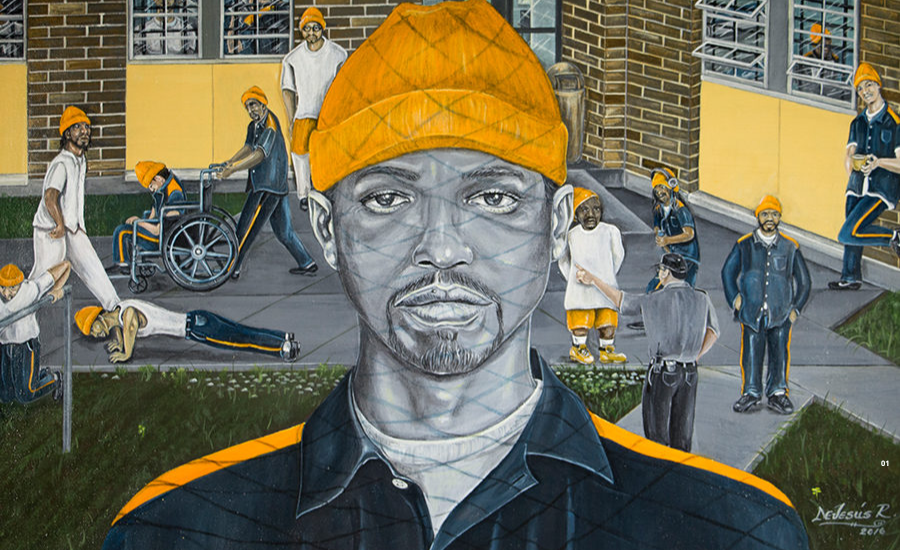introduction
Juvenile Prison detainment facilities frequently summon a blend of feelings — compassion, dissatisfaction, and even disarray. These organizations are planned to rebuff youthful guilty parties as well as to direct them toward recovery. Yet, what does this truly resemble practically speaking? As we dig into Adolescent Jail Section 7, we’ll investigate the complex universe of adolescent revisions. From their motivation and history to the continuous discussions about discipline versus recovery, there’s significantly more underneath the surface than meets the eye. Go along with us as we uncover the intricacies encompassing adolescent jails and their effect on society’s childhood. You’ll track down bits of knowledge that flash ideas and discussions about how we treat our weak people — the kids who have wandered off kilter.
Reason & Objectives of Adolescent Penitentiaries
Adolescent detainment facilities fill a basic need in the adolescent equity framework. Their essential objective is to address the remarkable necessities of youthful guilty parties. Dissimilar to grown-up offices, these organizations center around restoration instead of simple discipline.
The point is to direct adolescents toward positive conduct changes. Programs frequently incorporate instruction, treatment, and fundamental abilities preparation. This all-encompassing methodology sets them up for reintegration into society.
One more significant perspective includes safeguarding the local area from possible mischief. By keeping adolescents responsible for their activities, adolescent detainment facilities endeavor to lessen recidivism rates.
Besides, they establish a climate where youth can consider their decisions without outer impacts that add to their wrongdoing. A definitive goal isn’t simply control but encouraging development and improvement for a superior future.
The Historical Backdrop Of Adolescent Detainment facilities

The historical backdrop of adolescent detainment facilities is an intricate story. It started in the mid-nineteenth century when society perceived that youngsters and youths ought not to be dealt with like grown-ups in the law enforcement framework.
The principal adolescent court was laid out in Chicago in 1899. This is noticeably a critical shift toward recovery instead of discipline. The thought was to give direction, schooling, and backing to youthful wrongdoers.
As time elapsed, more offices arose explicitly intended for youth. These organizations expected to cultivate self-improvement rather than only regulating punishments.
In any case, by the late twentieth 100 years, reactions emerged in regard to conditions inside these offices. Issues, for example, congestion and absence of satisfactory emotional wellness care became pervasive worries.
This continuous advancement reflects more extensive cultural perspectives toward youth improvement and responsibility. Every period has molded the present comprehension of how best to deal with young guilty parties.
Should Peruse

Pass on Melusine Spoiler: A Profound Plunge into Part 8
Wisteria Wand and Blade Manga Section 43: A Total Outline
Date Hoshikerya Naite Miro: Section 4 Outline
Restoration versus Discipline: The Discussion Encompassing Adolescent Jails
The discussion over restoration versus discipline in adolescent penitentiaries is warm and complex. On one side, advocates for restoration contend that youthful guilty parties need direction, not simply outcomes. They accept these weak people can change with the right help.
Then again, some vibe that discipline fills in as a fundamental hindrance. They contend that without outcomes, there might be no impetus to change conduct.
The adequacy of each approach stays under a magnifying glass. Restoration programs plan to resolve hidden issues like injury and psychological well-being issues. Pundits question whether these techniques really work or on the other hand if they simply defer responsibility.
This pressure shapes approaches and practices inside adolescent offices cross the country. Each case presents one-of-a-kind difficulties, compelling partners to gauge the advantages of supporting against the need of discipline. The discussion go on as society wrestles with how best to direct youth towards a superior future while guaranteeing public security.
Recent Concerns & Difficulties Confronting Adolescent Detainment Facilities

Adolescent detainment facilities face a heap of difficulties today. One critical issue is packing. Offices frequently work past the limit, prompting deficient assets and unfortunate day-to-day environments for the young.
Moreover, psychological wellness concerns are uncontrolled among detained adolescents. Many enter the framework with unsettled injury or conduct that stay neglected because of restricted help administrations.
In addition, staff deficiencies plague these establishments. This can bring about increased strains and fewer open doors for positive collaborations among young people and restorative staff.
Another squeezing challenge is recidivism rates. The pattern of reoffending stays high when recovery programs are lacking or incapable, neglecting to furnish youngsters with vital fundamental abilities.
Cultural disgrace plays a part in forming public discernment about adolescent wrongdoers. Mistaken assumptions encompassing their conditions obstruct endeavors toward change and reintegration into society after discharge.
Fruitful Projects in Adolescent Penitentiaries
Adolescent jails have gained ground in executing fruitful projects that attention on restoration as opposed to discipline. These drives frequently accentuate instruction and self-improvement.
One outstanding system is the “Supportive Equity” approach. It urges youthful guilty parties to get a sense of ownership with their activities while encouraging discourse between casualties and culprits. This technique modifies trust and gives a feeling of conclusion.
Another viable drive includes professional preparation. By showing commonsense abilities, adolescents gain important apparatuses for future work. Programs like carpentry or PC coding outfit them with information they can utilize post-discharge.
Restorative mediations likewise assume a critical part in tending to psychological wellness issues among young people. Guiding administrations assist prisoners with handling feelings, diminish recidivism rates, and advance better survival techniques.
These fruitful projects feature the significance of establishing strong conditions inside adolescent offices. They make ready for enduring change in youthful lives.
Options in Contrast To Detainment For Adolescents
Options in contrast to detainment for adolescents are fundamental in tending to the underlying drivers of delinquent way of behaving. These choices underline restoration over discipline, permitting youth to learn and develop beyond conventional jail settings.
One compelling methodology is supportive equity programs. They center around fixing hurt brought about by offenses through discourse among casualties and guilty parties. This technique encourages responsibility while advancing mending.
Local area administration likewise assumes an essential part. By drawing in youthful people in certain exercises, they can add to society while acquiring significant fundamental abilities.
Mentorship drives give direction from confided in grown-ups. Interfacing in danger youth with tutors helps fabricate versatility and supports self-awareness.
Family treatment resolves fundamental issues inside the home climate. Reinforcing familial securities can fundamentally diminish recidivism rates among upset youngsters, making them ready for more promising times to come without depending entirely on detainment techniques.
Conclusion
The fate of adolescent jails is a point that requires progressing conversation and reexamination. As society turns out to be more mindful of the effect of imprisonment on youthful personalities, there is developing energy toward change. The concentration progressively moves to restoration as opposed to discipline.
Imaginative projects are arising, stressing training and psychological well-being support over customary corrective measures. These drives expect to address the underlying drivers of misconduct rather than exclusively dealing with its side effects.
Moreover, people group group-based choices are gaining momentum. Helpful equity rehearses offer roads for youth to offer to set things straight in their networks without depending on prison time. These methodologies cultivate responsibility while permitting adolescents to keep up with their associations with loved ones.
As we look forward, it’s essential for policymakers, teachers, and families to team up in creating a successful framework that can sustain youngsters back into society as useful individuals. A change in context on adolescent equity could lead us toward a more promising time to come where less adolescents face imprisonment yet still get the direction they need during testing times.
Stay in touch for more updates and alters visit: Ny City Paper!
